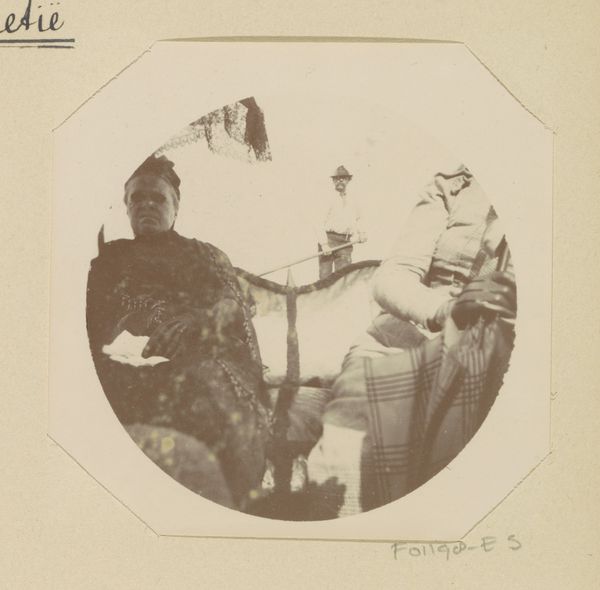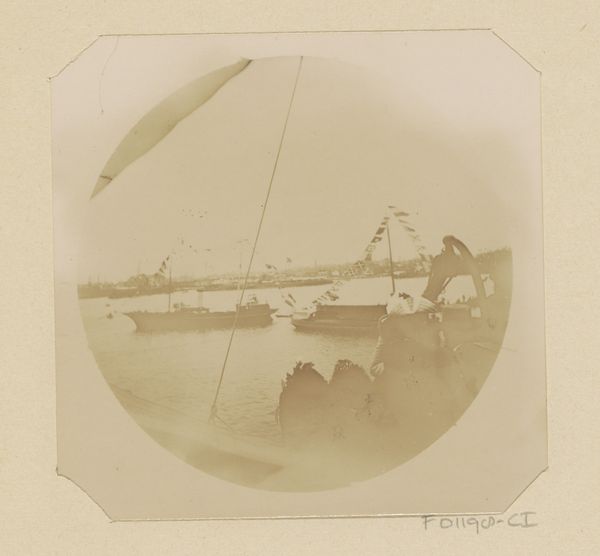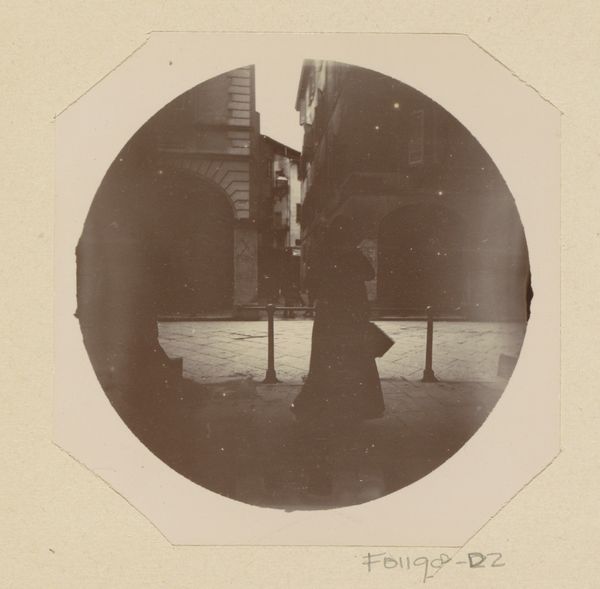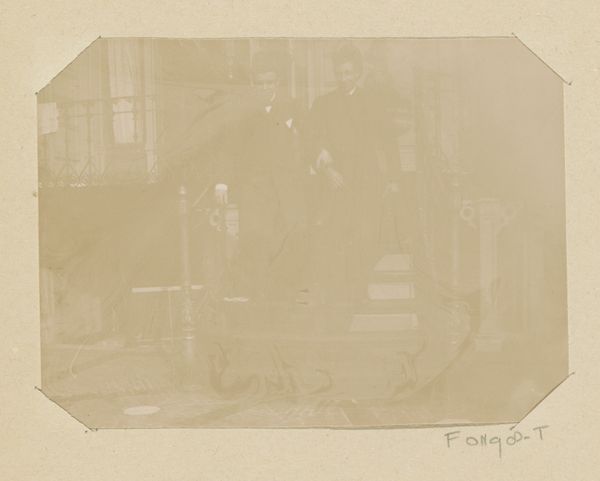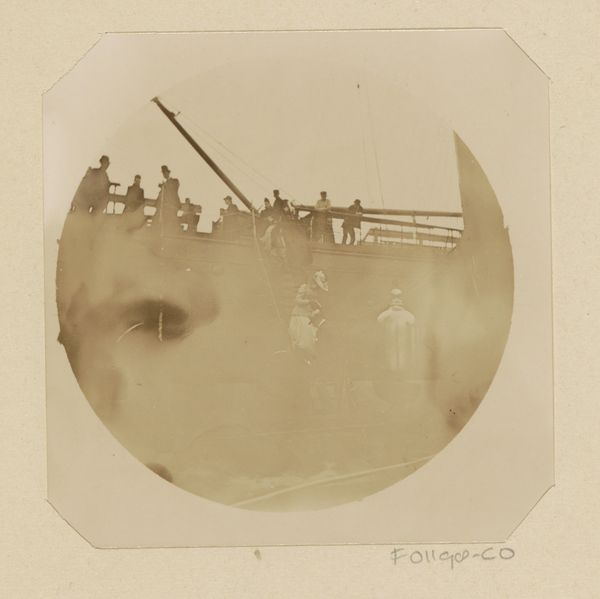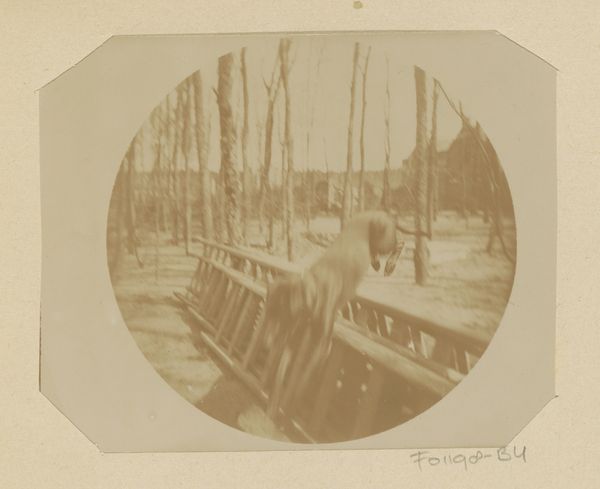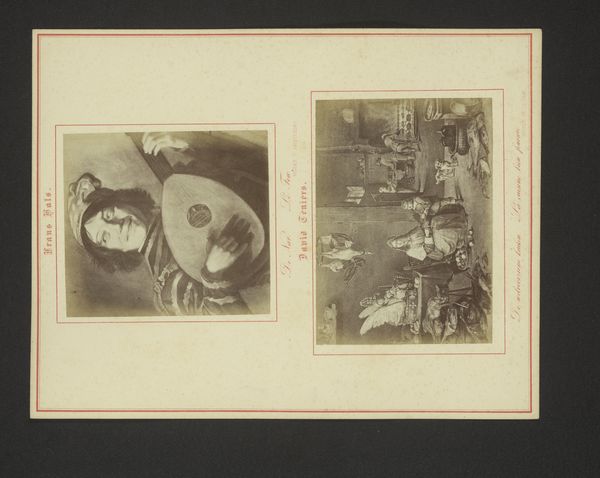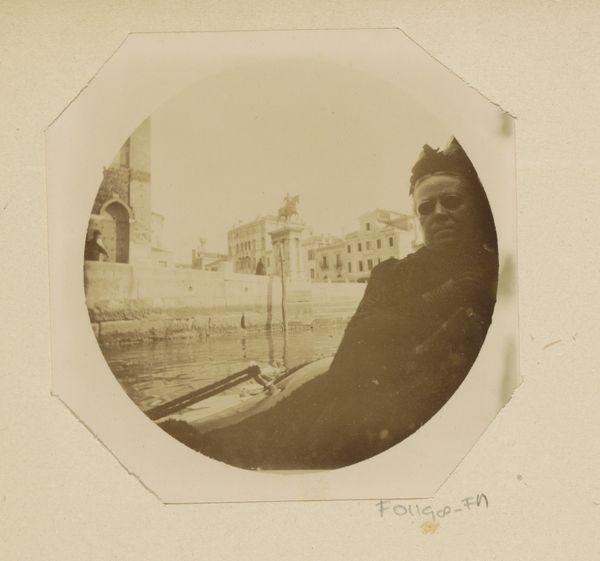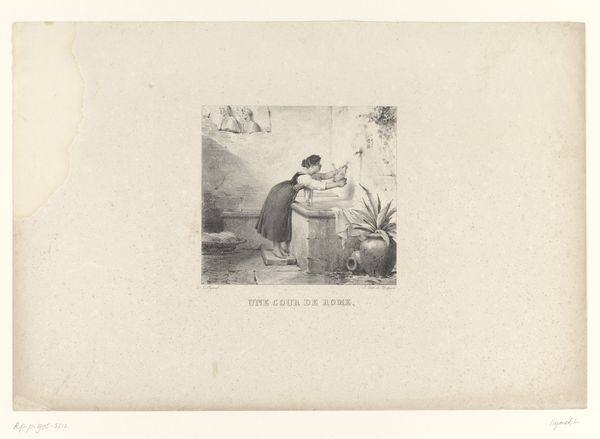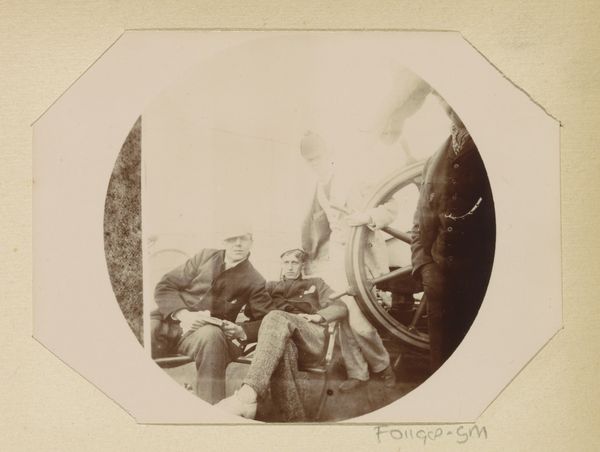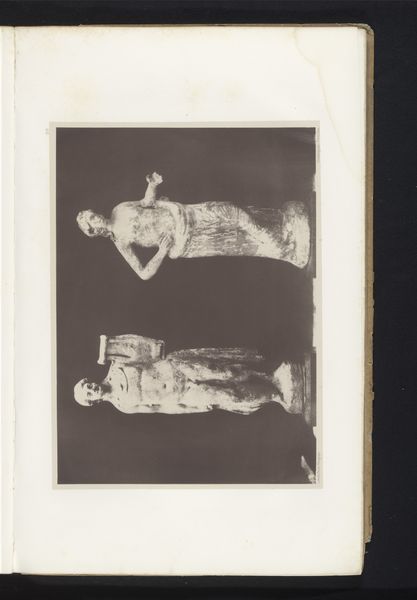
Portret van Lucia Wilhelmina Piek-Jolles naast een onbekende vrouw in een gondel in Venetië 1889 - 1893
0:00
0:00
photography
#
portrait
#
photo of handprinted image
#
still-life-photography
#
pictorialism
#
photography
#
genre-painting
#
watercolor
Dimensions: height 100 mm, width 100 mm
Copyright: Rijks Museum: Open Domain
Editor: Here we have an intriguing photographic portrait, dating from 1889 to 1893, titled 'Portret van Lucia Wilhelmina Piek-Jolles naast een onbekende vrouw in een gondel in Venetië,' attributed to Johanna Margaretha Piek. The sepia tones give it such an old-world feel, almost like looking at a memory fading. What catches your eye about this image? Curator: It does feel like a whispered secret from the past, doesn’t it? Beyond the technical aspects – and the beautiful soft focus typical of pictorialism, which really blurs the line between painting and photography – I'm struck by the *mood*. Look at their faces; there’s a certain somberness, wouldn't you agree? I feel as if there is a deeper story we will never grasp. Venice is famously romantic, but these women don’t seem caught up in the joy of the Grand Canal, do they? Or perhaps the rigid conventions of formal portraiture at the time called for that reserved expression. Editor: That's true, maybe I am assigning too much narrative. Are there things about the photographic process from the 1890s that influence how we read images of that time? Curator: Absolutely. Photography was still finding its feet as an art form. The very act of sitting for a photograph was a momentous occasion; unlike today's digital snapshots, these images were painstakingly created, resulting in an aesthetic more akin to painting or staged scenes, with the artist's hand often visible in the final print. This particular print leans towards what was called "Pictorialism", in which photography imitates painting through soft focus and unique printing processes. The photographer herself could add brush strokes, for example, or manipulate chemicals in the developing process. Editor: So it's not just capturing a moment, but shaping one, almost fictionalizing reality! Curator: Precisely! And that makes looking at pieces like this less about the factual and more about mood and tone – which makes them far more resonant than your standard souvenir snapshots! This artist aimed to invite the viewer into another world – and, I think, succeeded. Editor: That definitely provides a different perspective; thanks!
Comments
No comments
Be the first to comment and join the conversation on the ultimate creative platform.
